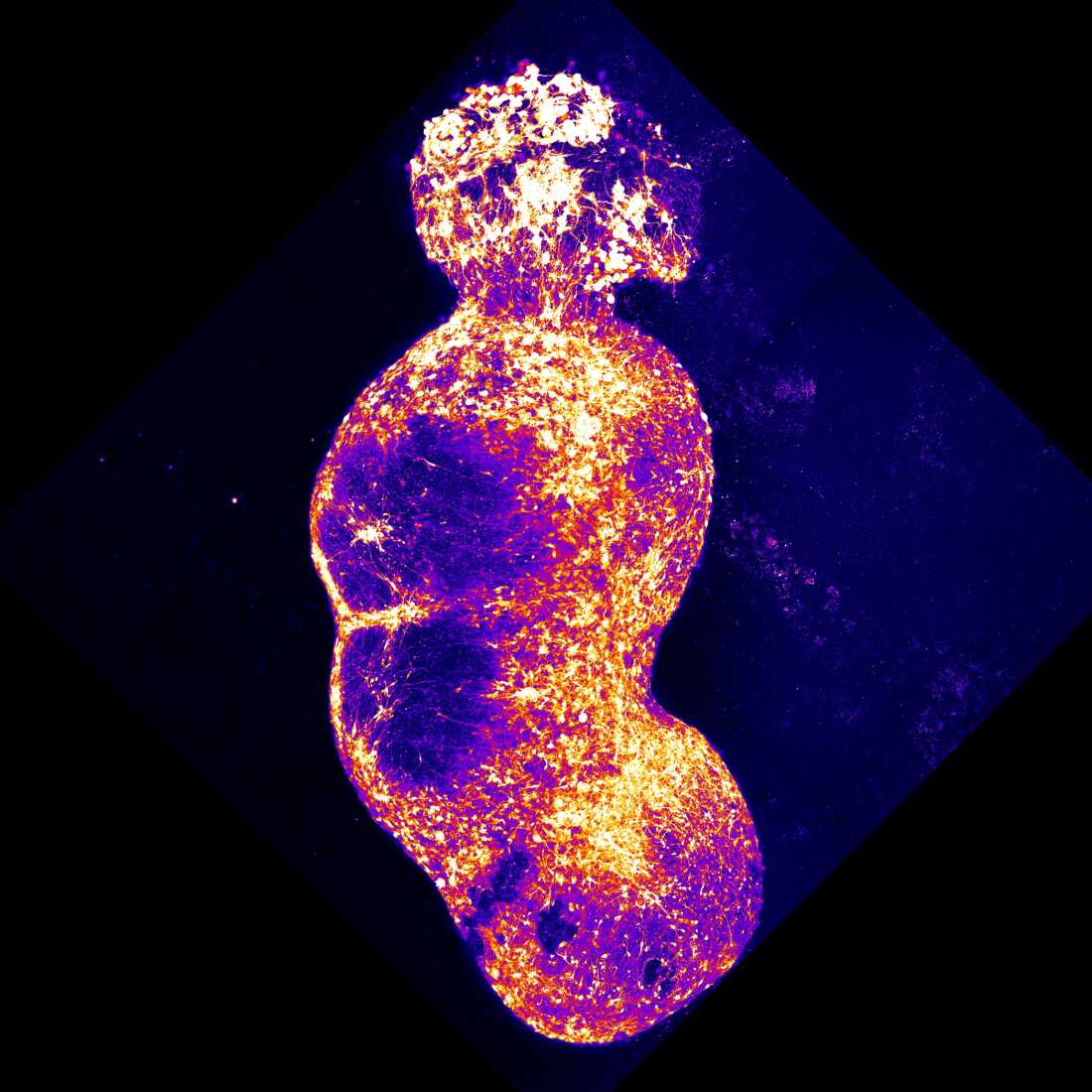Ache pathway in a dish may assist seek for new analgesic medication : Pictures


Researchers built-in 4 organoids that characterize the 4 elements of the human sensory pathway, alongside which ache alerts are conveyed to the mind. Stimulation of the sensory organoid (high) by substances, reminiscent of capsaicin, triggers neuronal exercise that’s then transmitted all through the remainder of the organoids.
Pasca lab/Stanford Drugs
disguise caption
toggle caption
Pasca lab/Stanford Drugs
Scientists have re-created a ache pathway within the mind by rising 4 key clusters of human nerve cells in a dish.
This laboratory mannequin might be used to assist clarify sure ache syndromes, and provide a brand new strategy to take a look at potential analgesic medication, a Stanford staff studies within the journal Nature.
“It is thrilling,” says Dr. Stephen Waxman, a professor at Yale College of Drugs who was not concerned within the analysis.
At the moment, potential ache medication are sometimes examined in animals — whose responses are sometimes completely different than a human’s — and in particular person nerve cells, which can not mirror the conduct of whole mind networks.
With this new system, referred to as a mind assembloid, “we’ve got a miniature nervous system that is perhaps a really helpful platform,” Waxman says.
A pathway with a number of stops
The mannequin is the results of an effort to re-create the signaling chain that happens after publicity to painful stimuli, says Dr. Sergiu Pașca, a professor at Stanford College who led the venture.
Contact a sizzling range, for instance, and particular cells within the pores and skin “ship that data all the way in which to the spinal twine,” Pașca says. “Then the spinal twine will relay it as much as the thalamus deep within the mind, after which all the way in which to the outer layer of the mind, which is the cortex.”
To approximate this pathway within the lab, Pașca’s staff created 4 completely different mind organoids, spherical clumps of human nerve cells that develop in a dish. The staff coaxed every organoid to resemble one particular sort of mind or spinal tissue discovered alongside the ache pathway.
“After which we put them collectively, actually put them in shut proximity, and watched them as they linked with one another,” Pașca says.
After greater than six months creating within the lab, the ensuing assembloid had created a pathway linking the 4 organoids. The nerve cells additionally spontaneously started “working in a coordinated vogue throughout the 4 components of this assembloid,” Pașca says.
Chili peppers and ache syndromes
To check the mannequin, the staff uncovered it to capsaicin, the chemical that makes chili peppers painfully sizzling.
“You then begin seeing that data touring,” Pașca says. “The neurons that sense these alerts get activated and so they transmit that data to the subsequent station and the subsequent station, all the way in which to the cortex.”
Subsequent, the scientists tried creating assembloids utilizing cells with genetic variants linked to irregular ache notion.
Considered one of these variants causes a uncommon situation known as erythromelalgia, or man-on-fire syndrome.
“These people really feel searing, burning, scalding ache in response to gentle heat,” Waxman says.
The scientists discovered that assembloids with the gene variant produced way more spontaneous communication between organoids, suggesting a heightened sensitivity to ache.
Outcomes like that counsel that organoids are already a helpful strategy to research each nervous system ailments and the pathways they have an effect on, says Dr. Guo-li Ming, a professor on the College of Pennsylvania’s Perelman College of Drugs who additionally had no position within the new research.
For all its complexity, the ache pathway in a dish is a extremely simplified model of what goes on in an individual, Ming provides. For instance, people have two main pathways that carry ache alerts to the mind, whereas the mannequin system contains only one.
In consequence, the mannequin can detect a painful stimulus, however would not produce an emotional response, Pasca says.
“So we do not consider that this pathway that we have constructed is in any approach feeling ache,” he says.
And these clusters of human cells are prone to grow to be much more worthwhile as scientists discover methods to re-create bigger and extra complicated components of the nervous system.
For instance, Ming’s personal lab has developed a mannequin of a human neural tube, the construction in an embryo that ultimately turns into right into a child’s mind and spinal twine. Her purpose is to grasp how neurological issues develop early in life.









